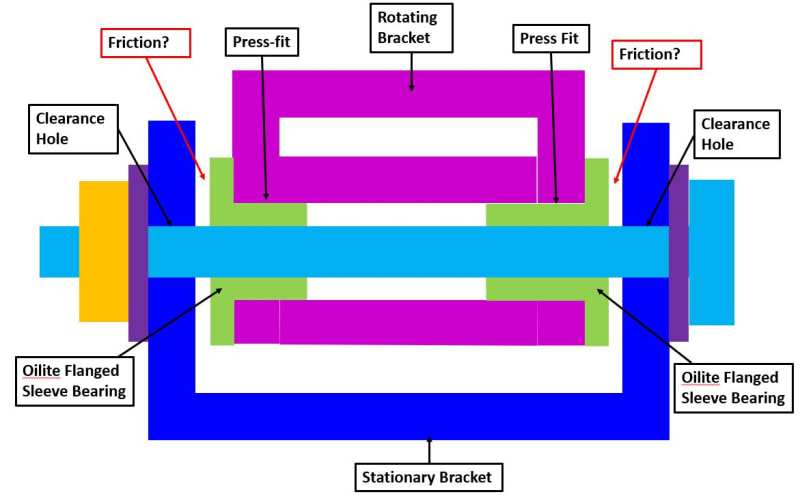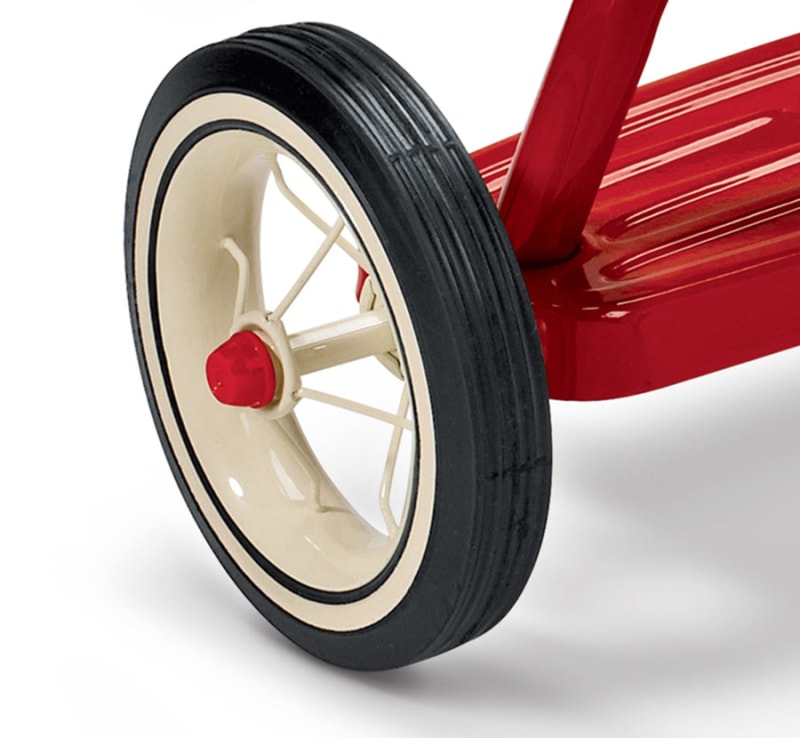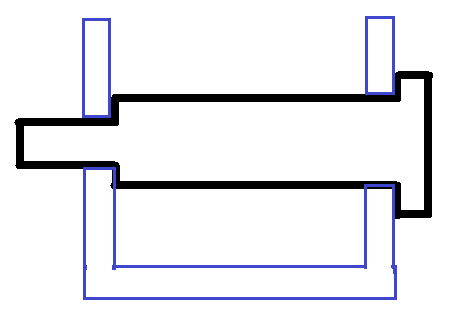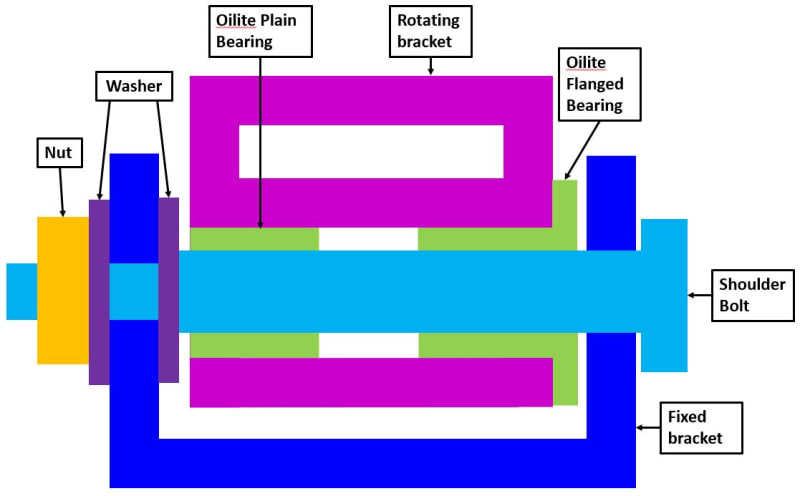-
1
- #1
Rayleigh
New member
- Dec 20, 2022
- 12
I am designing a hinge and would like to ask for some advice/recommendation on the sleeve bearing configuration. It is similar to a see-saw hinge. The application is low-speed.
In the picture below, the dark blue bracket is the stationary bracket, while the magenta bracket can be rotated. Will this configuration work or are there any downsides to it? Any counter-proposal would also be appreciated.
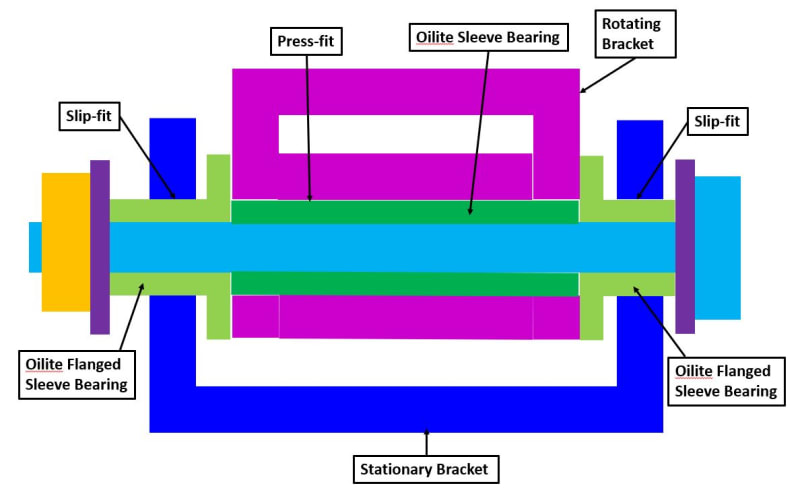
In the picture below, the dark blue bracket is the stationary bracket, while the magenta bracket can be rotated. Will this configuration work or are there any downsides to it? Any counter-proposal would also be appreciated.


